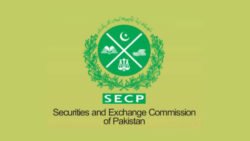Between Washington and Beijing: Pakistan’s high-stakes balancing act

Publishing date: 02 September 2025
Published in: Business Recorder
The last-minute trade deal between the US and Pakistan that was signed on July 31st, 2025, reflects a significant shift in Pakistan’s diplomatic and political landscapes amid the ongoing trade war between the US and China and shifting regional security dynamics.
The deal is hailed by some as pivotal in bilateral relations, while criticized by others on grounds of increased economic dependency and strategic cliency.
Owing to the prevailing situation, where Washington has been mounting tariff pressure on its key international partners including its strategic ally in south Asia (India), managing to secure significant economic concessions is no doubt a win for Pakistan.
However, the deal may deliver short-term relief to the already struggling economy of Pakistan. But in the long run, it could pose serious challenges to the country, both on the politico-economic and diplomatic fronts.
While the complete details are still pouring in, the deal mainly encompasses US commitments on tariff reduction, exploration of oil reserves in Pakistan (if any) and investing in tapping the rare earth mines mostly found in troubled areas of Baluchistan and KP. The US has reduced tariff on Pakistani exports from 29% to 19%, providing it a significant edge over other countries of South Asia, particularly its archrival India which now faces 50% tariffs.
The relatively decreased tariffs, investment in resource development and other economic concessions would likely boost the country’s textile industry (amounting to more than 60% of its export to US) and buy Pakistan time to turn this relief into a sustained opportunity.
However, this turn-around would not just require statistical economic calculations but political stability, financial transparency and internal cohesion amid the growing disarticulation between the state and the society.
As they say, there is no free lunch and that every gain carries a cost. The same goes for Pak-US relations. Throughout history their bilateral relations have largely remained transactional. Once the US achieves its objectives, Pakistan is often left to dry.
Whether it was SEATO and CENTO, the Afghan Jihad or the War on Terror, each phase is a reflection of such pattern. The recent trade deal is no different. The geopolitical strings that might be attached could be heavier than anticipated or may be obscured for now by the glow of short-term euphoria.
Of the obvious challenges that Pakistan may confront in the days ahead, maintaining a delicate strategic balance in its relationship with China and US simultaneously lies at its heart. China has been an important strategic ally of Pakistan.
Besides, providing a diplomatic support at every international forum such as the UN, China’s role in the infrastructure development of Pakistan has been instrumental. For the past two decades it has been pouring billions of dollars into the development of Pakistan’s energy and infrastructural sectors through China-Pakistan Economic Corridor (CPEC).
Similarly, in the recent stand-off between India and Pakistan in May 2025, while Washington acted as a mediator to manage the conflict and diffuse the threat of an all-out war, Beijing stood firm by Islamabad in the face of conventionally superior enemy.
However, the much-celebrated trade deal between Pakistan and the US grants the latter an opportunity/permission to invest in the development of important yet sensitive sectors such as mining, energy and digital infrastructure. While over reliance on Bejing for economic and infrastructural development may not be a prudent option, but the presence of US in these sectors might be seen by China as a notable shift in the Pakistan’s strategic and economic alignment. It might consider it as an encroachment on its regional interests and a potential threat to CPEC, thus undermining its Belt and Road Initiative. Furthermore, amid the fast-changing geopolitical environment where the power is transitioning from the West to the East, the agreement could be perceived as a part of a broader US scheme to somehow sustain its declining global hegemony.
Pakistan is now walking on a tight rope and even a slight misstep could prove to be very detrimental. Failure to maintain a good balance in its international relations, and even a minor tilt towards the US could strain its ties with China, jeopardizing not only the multibillion-dollar project (CPEC) but also resulting into severe political and diplomatic repercussions.
Apart from external challenges, the deal will also have a lasting impact on Pakistan’s internal stability and overall political environment. It brings the US firms and much of the investment to the conflict-ridden province of Baluchistan and other restive regions of the country. These regions have often resisted foreign interference and external control over their resources, calling it exploitation.
Strong presence of the US companies could fuel the fire and could deepen the existing fault lines, hence exacerbating the inherent conflict between the state and the society. History stands as a witness that any such venture, without a nuanced understanding of the local realities, and without considering the concerns of the indigenous population, would only result into more unrest rather than fostering prosperity.
The deal might prove to be a watershed moment for Pakistan’s diplomacy as it marks a significant shift in its relations with the US from a crisis driven and security-oriented alignment to an economic one. However, the real test is yet to come. Negotiating such an agreement is no doubt an achievement, but the real success hinges upon its effective execution.
Whether the deal serves as a catalyst for a positive transformation, bringing about peace and prosperity, or just prove to be another cosmetic venture in the name of reform and development will solely depend on Pakistan’s ability to steer clear of the challenges and honor its promises.





